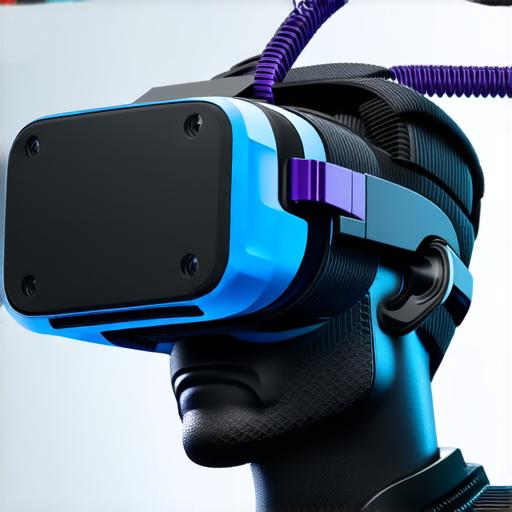Introduction
Virtual reality (VR) is an exciting and rapidly growing field that offers developers countless opportunities to create immersive and engaging experiences. However, understanding the mechanics of VR headsets is essential to ensure a seamless experience for users.
The Components of Virtual Reality Headsets
Virtual reality headsets consist of several key components that enable users to experience a virtual world. These include:
-
Display: The display is responsible for showing the user the virtual environment. It can be either a single screen or multiple screens, and it typically has a high resolution to ensure a clear image.
-
Head-mounted display (HMD): The HMD is the component that attaches to the user’s head and holds the display in place. It also tracks the user’s movements using sensors and adjusts the image accordingly to maintain a realistic experience.
-
Input devices: Input devices, such as hand controllers or gloves, allow users to interact with the virtual environment. They typically use sensors to track the user’s movements and translate them into actions in the virtual world.
-
Computer hardware: The VR headset requires a powerful computer to generate the high-quality graphics and process the user’s input. This can include a dedicated graphics card, a high-end CPU, and a large amount of RAM.
-
Software: The software that runs on the VR headset is responsible for rendering the virtual environment, tracking the user’s movements, and ensuring a smooth and seamless experience.
How Virtual Reality Headsets Work
Once the components of the VR headset are in place, how does it actually work? Here’s a brief overview:
-
Image generation: The computer generates high-quality graphics that represent the virtual environment. These images are then sent to the display, where they are displayed on the screens.
-
Sensor tracking: The sensors attached to the HMD track the user’s movements and adjust the image accordingly. This ensures that the user always sees a realistic representation of their surroundings in the virtual world.
-
Input processing: The input devices used by the user, such as hand controllers or gloves, are also equipped with sensors that track the user’s movements. This data is then processed by the software and translated into actions in the virtual world.
-
User experience: Once all of these components are working together, the user experiences a seamless and immersive virtual reality environment.

Factors Affecting Virtual Reality Headset Performance
There are several factors that can affect the performance of a VR headset, including:
-
Graphics quality: The higher the resolution and frame rate of the graphics, the smoother and more realistic the experience will be.
-
Input lag: If there is too much input lag between the user’s movements and the response in the virtual world, it can lead to a disjointed and less immersive experience.
-
Field of view: The field of view, or the area that the user can see in the virtual world, affects how immersive the experience is. A wider field of view can provide a more realistic sense of presence.
-
Comfort: If the VR headset is uncomfortable or difficult to wear for extended periods, it can lead to fatigue and reduce the overall enjoyment of the experience.
-
Cost: The cost of a VR headset can affect its accessibility and affordability for developers.
Real-life Examples
Let’s take a look at some real-life examples of how VR headset mechanics work in practice:
-
Oculus Quest 2: The Oculus Quest 2 is a popular consumer-grade VR headset that uses a single display and sensors attached to the head to track the user’s movements.
